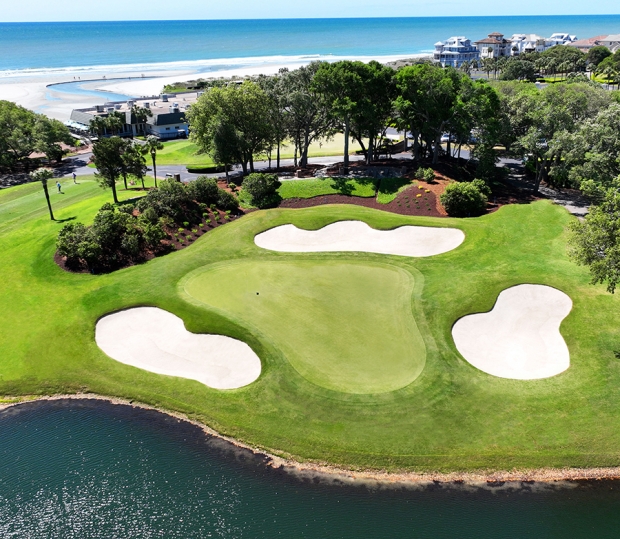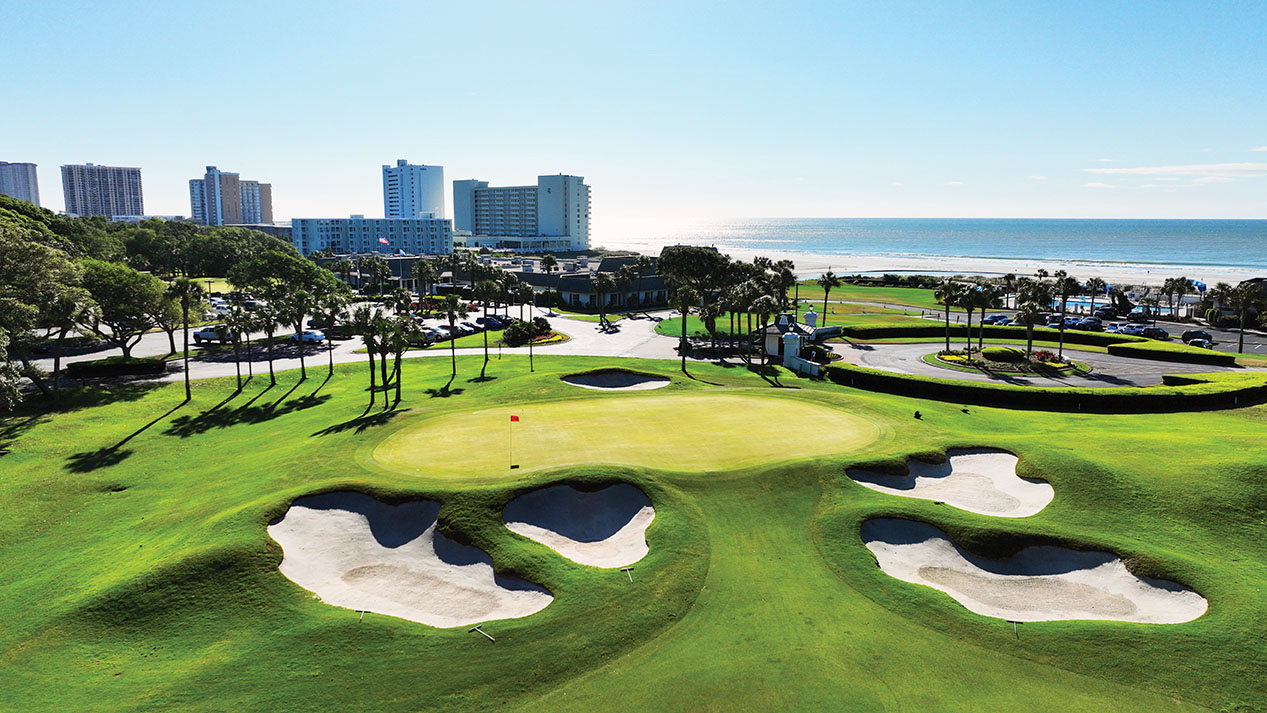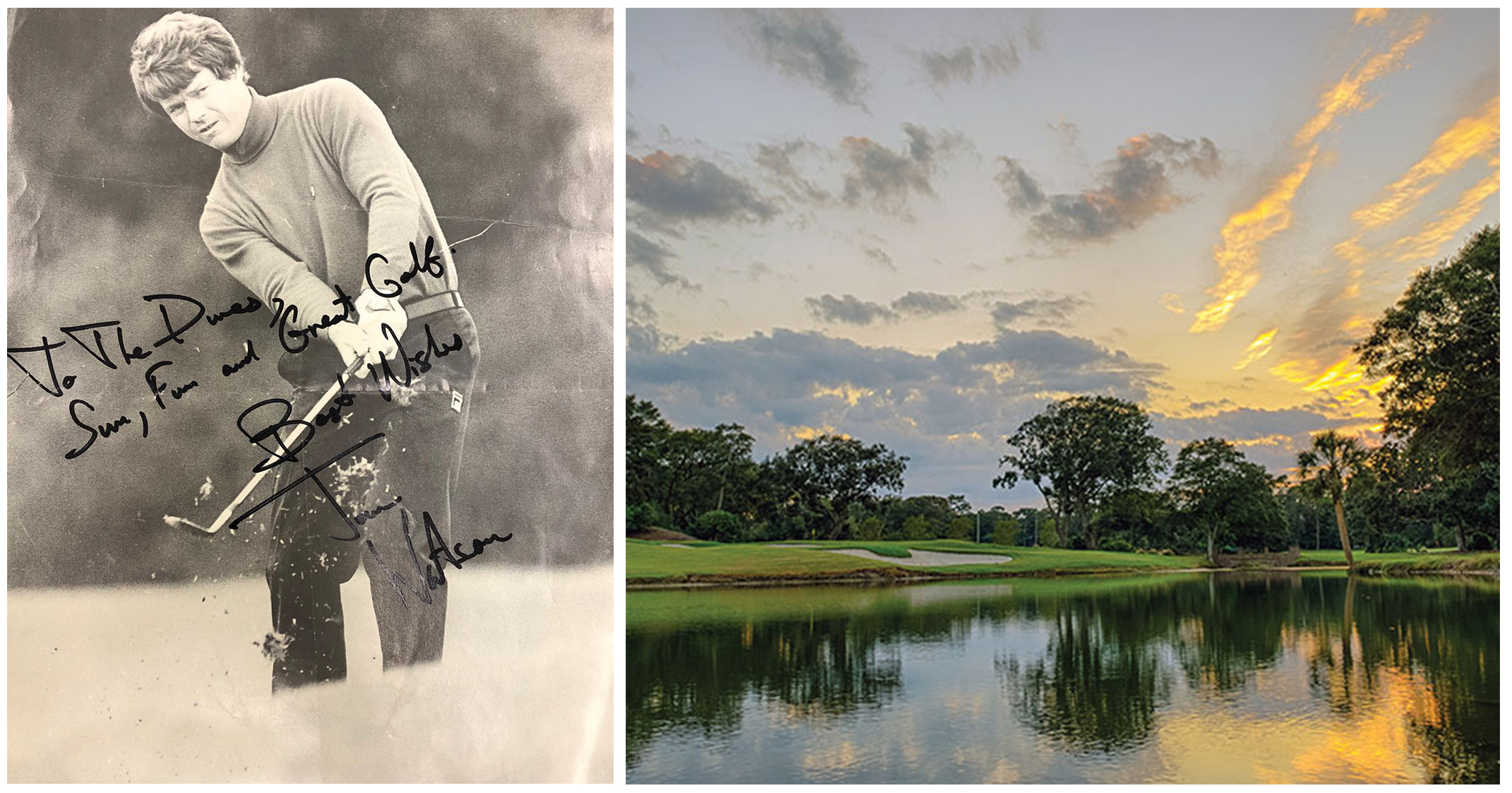The Myrtle Beach Classic golf tournament becomes a reality at Dunes Golf and Beach Club

Myrtle Beach has long held the title of “Golf Capital of the World.” Golfing enthusiasts from around the globe have made the Grand Strand a road-trip destination for decades due to the number of the courses, unlimited amenities, moderate climate and Southern hospitality.
In the past, the Grand Strand has hosted a number of high-profile Professional Golf Association (PGA) golf events including the Senior PGA, Ladies PGA, PGA professional National Championship and numerous amateur, junior and collegiate tournaments, but never has been a serious contender for a men’s PGA Tour/Fed Ex Cup event tournament. All of that changed when Myrtle Beach Area Chamber of Commerce President and CEO Karen Riordan wondered “Why not?”
In the late 1800s, a handful of golfers got together in Newport, Rhode Island and held a tournament they billed as the U.S. Open. Golf had already been popular for some time in Europe with organized tournaments and a structured, governing body setting the rules and standards. Golf in the USA became more popular in the early 1900s with tournaments popping up around the country. Golfers and entrepreneurs soon realized that grown adults trying to hit a little white ball into a small cup was becoming a commercial success. With the explosion of the game came a need for more organization. In 1916, the Professional Golfers Association of America was founded. The organization included both tour players and club professionals whose goal was to establish standards for the blossoming profession and grow interest, support and participation in the game of golf. Their motto is “Serve the Member and Grow the Game.” The game of golf continued to gain popularity with both players and spectators and the numbers of tournaments and spectators were booming. The public couldn’t get enough of rising superstars like Arnold Palmer and with the introduction of television, the need arose to restructure the organization to better address the increasing revenue streams. It was divided into separate entities of tour players (PGA TOUR) and club professionals (PGA of America). The PGA not only makes money for its members, it has been a huge charitable contributor. To date, the PGA has contributed more than $3 billion in charitable donations on the national and local levels. It is generally agreed upon as to when and where the game of golf started and organized, but it is less clear as to whose idea it was to intentionally frustrate yourself by trying to hit a small ball with a stick into a hole in the ground.
The initial process for The Myrtle Beach Classic began about two years ago when Karen Riordan started exploring the idea of a PGA Tour event coming to the Grand Strand.
“We have the title of ‘Golf Capital of the World,’ but were better known for quantity than quality. That needed to change,” says Riordan. She reached out to local and state leaders who worked as a team and got things going. This was in the Spring/Summer of 2022 and everyone was adjusting to the changes brought on by the COVID pandemic. The PGA was no exception, and in addition to dealing with issues in sponsorship for tournaments, they were experiencing changes to their normal routines and formats to meet challenges from other entities.

The timing was perfect for the PGA Tour to consider adding another event to the schedule and Myrtle Beach was standing there with open arms. Riordan says that when they originally were in exploratory conversations, the PGA Tour suggested that they try another Senior PGA or LPGA event. The PGA was surprised to find out that Myrtle Beach was committed to hosting a PGA Tour tournament with Fed Ex on a long-term basis. There was a year-long period of proposals and rapport building, which culminated in a four-year commitment to host The Myrtle Beach Classic golf tournament.
Riordan states: “The level of excitement and pride by local residents of Myrtle Beach and Horry County is incredible. The outpouring of support has been overwhelming. The national, positive attention to this area is going to be great.”
The golf course selected to host the Myrtle Beach Classic is The Dunes Golf and Beach Club, better known as simply The Dunes Cub. This magnificent piece of property is located on one of the most beautiful tracts of land anywhere on the Grand Strand, with breathtaking views of the Atlantic Ocean, marshes and lakes. The course is consistently ranked among the best in South Carolina and its 13th hole, “Waterloo,” is ranked by Sports Illustrated in the Top 100 golf holes in the country. This was made possible in 1947 after a small group of local businessmen met on the property to discuss building a first-class golf and beach club that would not only be for their enjoyment, but would attract visitors during the off-season.
The Dunes Golf and Beach Club was incorporated in 1948 and one of the first and most critical early decisions made was to hire an up-and-coming golf course architect named Robert Trent Jones. Jones had just finished his first major project at a course in Georgia with a fellow named Bobby Jones (not related) and was on his way to creating a lasting legacy in the golf world. He was a perfect fit for this endeavor. Jones had a philosophy of working with the natural contours and nuances of the property to develop a course that would reward precise shot-making and penalize a wayward swing. Jones’ courses have playability for the average golfer with sufficient difficulty to challenge the world’s best players from the back tees.
“Follow the land” Jones said. “Don’t change the land.” This theory is evident at the Dunes Club, with its wide, sloping fairways lined with pines and mossy oaks or shaped around natural marshes and lakes. The golfer who is temporarily mesmerized by the natural beauty of the landscape will pay a steep penalty for a lapse of concentration. Firm and fast greens designed by Jones to sometimes hold a “green within a green” make it imperative to keep the ball on the correct side of the flagstick. A generous number of bunkers are strategically placed along the fairways and around the greens to penalize a poorly-struck ball or poor judgement. The design is timeless and requires great golf shots in order to be a champion. Jones would go on to design or re-design more than 500 golf courses around the world and be inducted into The World Golf Hall of Fame for his lifetime of work.
For the past 16 years, Dennis Nicholl has led the team tasked with maintaining The Dunes Club and keeping true to its original design. First as the PGA Head Pro and now as Director of Golf, Nicholl oversees a team of assistant pros and grounds crew that keeps the course in pristine condition 12 months of the year. He’s no stranger to hosting (and participating in) big tournaments at The Dunes. He had been a part of hosting the PGA Tour Champions Tournament in 2014, the PGA Professional National Championship in 2015 and the USGA Women’s Tournament in 2017, among others. So, when the call came about The Myrtle Beach Classic, he was ready to hit the ground running.
Over the years, The Dunes has continually tweaked the course and facilities to enhance the experience without deviating from its original intent. In 2013, the greens were switched over to Bermuda grass. In 2017, the golf shop was renovated and updated to reflect the coastal vibe. In 2018, the bunkers were redone. “In order to maintain the integrity of the original design, we consult with Robert Trent Jones’ son, Rees Jones, who signs off on all changes to the course,” confirms Nicholl. After consulting with the PGA Tour, some changes were made to the set-up of the course. Spectators will notice expanded and renovated chipping greens and putting greens. Also new are the Zoysia grass tee boxes. Hole number 2 will now be playing from the old number 8 tee box and the new number 8 will now be a par 4, changing the course par to 71.

“The response and support from the community has been great. We have received over 3,000 requests from local volunteers to fill the 1,500 positions needed, and ticket sales are exceeding all expectations,” says Nicholl. The clubhouse golf shop will be open for spectators to shop, along with a tented area next to the entrance to purchase logo hats, golf shirts, koozies, ball markers and other memorabilia. Tournament Director Darren Nelson says that ticket sales for the all-inclusive VIP hospitality venue at hole 18 went so well that a second venue has opened on hole 17, which features open bar and food with elevated, panoramic views of the 11th, 16th, 17th and 18th holes.
Panoramic views will be unlimited from the television towers, and this tournament will prove to be a crown jewel of the Grand Strand. When the rest of the country gets a glimpse of the spectacular beauty that this area has to offer, it will be etched into the minds of golfers everywhere. The PGA tour currently has “Amen Corner”, “The Bear Trap”, “The Green Mile”, and “The Snake Pit.” Get ready to add “Alligator Alley” to the list. The name aptly refers to the 11th, 12th and 13th holes that lay in wait to bite the next victim who dares to challenge them. Every hole on The Dunes Club course has its own unique strengths and nuances which can spell doom for an unsuspecting player.
Current Men’s Club Champion Jason Wilner shared some insights on what the viewer can expect to see on some of the holes: “On every hole, shot-making is imperative and distance control is the key,” says Wilner. It will be interesting to see which professional golfer will be the first to tee off on Hole No. 1 and be written into the history of the tournament. After all, every shot and score will set the standard for the years ahead. Looking down No. 1, the player will get an indication of how the course will play. Wind will play a factor, and bunkers to the right and left will require accuracy from the tee. An errant shot to the right could spell tree trouble. No. 2 presents its own difficulties from the new tee box. It may be difficult to cut the corner requiring a lay-up short of the center bunker. The second shot with a low iron must be accurate or the ball could roll back 15-20 yards off of the false front.
“No. 6 tee shot will be played according to the wind direction. Playing right is safer, but requires a longer second shot into a difficult, sloping green,” states Wilner. No. 7 could prove to be one of the most difficult holes. It requires a perfect tee shot down the middle because right or left could mean jail and the approach shot is to a narrow, crowned green that can make for an uneasy 2-putt. No. 9 has a variety of options from the tee boxes. The players get a view of the ocean, but can’t be distracted from the task of precise distance control required here. Nos. 11, 12 and 13 are “Alligator Alley” with the 13th “Waterloo” anchoring the trio. It will be easy to be distracted by the natural beauty of the holes. which are known to cause distress to a poorly placed ball. For No. 14, local golfer Brandon Lavin predicts, “The hole simply requires 2 solid golf shots to make par. Birdies will be rare.” No. 18 is a great finishing hole that rewards accuracy both off of the tee and to a green protected by water and bunkers. “Its going to be a great tournament,” says Wilner.
What will be on display in May at the inaugural playing of The Myrtle Beach Classic golf tournament is a culmination of a community coming together to claim its right to the title “Golf Capital of the World.”

$225,000 worth of proceeds from the tournament will benefit nine nonprofit organizations:
North Myrtle Beach native Vanna White is set to play in a May 8 pro-am event.
Notable golfers who have played at Dunes:
For More Info:
Go to myrtlebeachclassic.com and pgatour.com
Watch It Live:
The Golf Network and Peacock will have live coverage of the tournament from 9:30 a.m. to 11:30 a.m. on May 9-10 and from 3 p.m. to 5 p.m. on May 11-12.